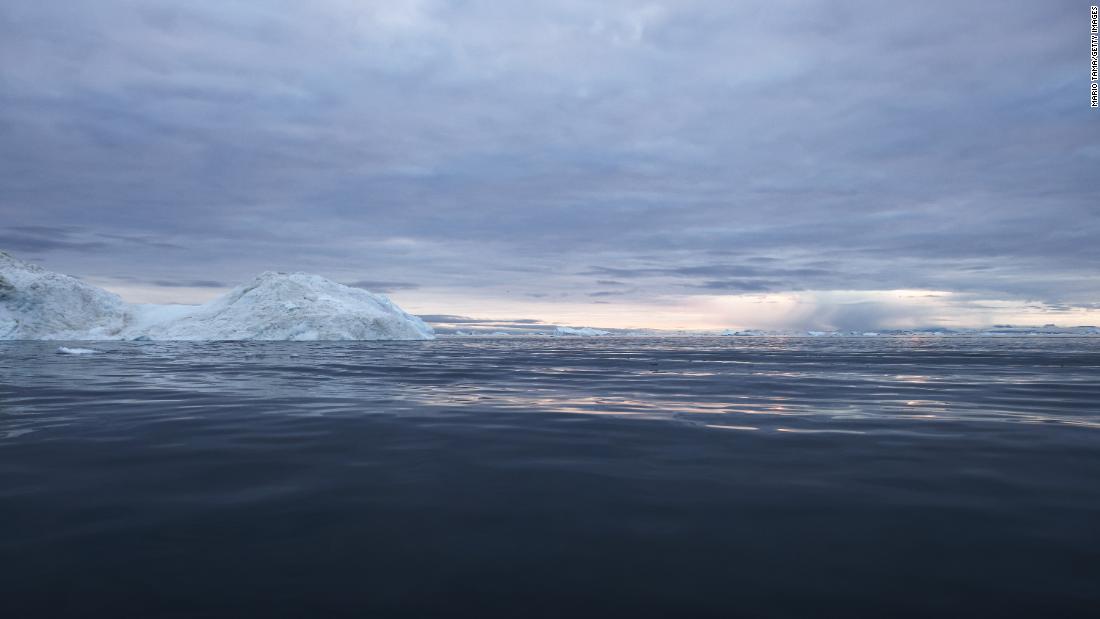It rains for the first time on the summit of Greenland 0:48
(CNN) -
In August, for the first time in history, it rained on the summit of Greenland instead of snow, at a time when the northern hemisphere was experiencing warmer summer temperatures than usual.
A new study suggests that this is likely to be the norm in just four to five decades.
According to the study published Tuesday in the journal Nature Communications, the Arctic is expected to experience more rain than snow sometime between 2060 and 2070, marking a major transition in its precipitation patterns as the climate crisis triggers higher rainfall. temperatures in the region.
A new climate model shows that the transition could occur earlier than scientists anticipated.
Michelle McCrystall, lead author of the study and a climate researcher at the University of Manitoba in Winnipeg, told CNN that previous models suggested that this phenomenon would not occur until between 2090 and 2100.
"But with the new set of models, this has been advanced to roughly between 2060 and 2070, so there is a jump like 20 years with this early transition," he said.
Precipitation due to loss of sea ice
The study notes that the increase in rainfall is largely due to the loss of sea ice.
More water and warmer air temperatures mean more evaporation, preparing the atmosphere for a more humid Arctic.
The researchers say that an Arctic dominated by rainfall can destabilize the mass balance of the Greenland ice sheet and cause a global rise in sea level.
advertising
"Things that happen in the Arctic don't stay specifically in the Arctic," McCrystall said.
"The fact that there may be an increase in emissions from the melting of permafrost or a rise in global sea level is a global problem and needs a global response."
Warning for massive thaw in Greenland 0:36
In August, the UN Intergovernmental Panel on Climate Change (IPCC) released its report concluding that the planet is rapidly approaching 1.5 degrees Celsius above pre-industrial temperatures. , a threshold that, according to scientists, the world should avoid passing in order not to suffer the worst consequences of the climate crisis.
But the authors of Tuesday's study said the transition from snow to rain is likely to occur in some parts of the Arctic, particularly Greenland, even if warming is contained at 1.5 degrees.
Heating
An analysis by Climate Action Tracker of current world policies showed that the Earth is currently on track to reach 2.7 degrees Celsius of warming.
And that's assuming that countries follow their plans to reduce greenhouse gas emissions.
With a warming of about 3 degrees, the researchers found that most areas of the Arctic will shift to a regime dominated by rains.
"If we stayed within this 1.5 degree world, the Arctic could still be dominated by snow by the end of the century, but some parts will probably still be in transition," and some of them are already in transition, McCrystall said.
"But we are still on the path of a 3 degree world."
Although scientists who were not involved in the study agreed that the Arctic is undergoing rapid change amid the climate crisis, some expressed caution about the study's results, specifically pointing to the critical need for more observations and more research.
7 billion tons of water fell in Greenland
Scientists have concluded that the burning of fossil fuels has caused Greenland to melt over the past two decades.
A recent study published in the journal Cryosphere concluded that Earth has lost a staggering 28 trillion tons of ice since the mid-1990s, much of which has come from the Arctic, including the Greenland ice sheet.
The region already had a taste of what its rainy future would look like last August, when temperatures at the top of Greenland topped freezing for the third time in less than a decade.
The hot air fueled an extreme rain event that dumped 7 billion tons of water onto the ice sheet.
According to the National Snow and Ice Data Center, this is the most precipitation on the ice sheet since records began in 1950, and the amount of ice mass lost on that summer day was seven times higher. to the daily average for that time of year.
"Although it is inevitable that rainfall in the Arctic will increase as the climate warms, it is also likely that the rains will be more intense," Mark Serreze, co-author of the study, told CNN.
A waterfall in Greenland worries researchers 1:17
They expect more rain
Although the projections are not definitive, McCrystall said that more episodes of rain are expected in Greenland and throughout the Arctic region as more greenhouse gases continue to pump humans into the atmosphere.
"With the warming of the oceans and the rainfall that has occurred (in Greenland), there is some indication that maybe things are even more extreme or changing much more rapidly than even our models project, potentially," he said.
But "the fact that everything is changing to show that there are greater extremes in precipitation, that in itself is an indication of human-induced climate change, no doubt," McCrystall said.
Greenland

